|
|
|
Sort Order |
|
|
|
Items / Page
|
|
|
|
|
|
|
| Srl | Item |
| 1 |
ID:
159023
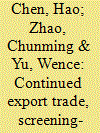

|
|
|
|
|
| Summary/Abstract |
The screening mechanism of export trade facilitates enterprises to increase their recruitment threshold, which in turn has a biased impact on the employment of heterogeneous individuals. Incorporating export trade, screening-matching and gender discrimination in employment into a unified analysis and applying propensity score matching estimation on the basis of the theoretical framework of micro-enterprise and the optimized behavior of job seekers, this paper examines the relations between export trade of industrial enterprises and female labor employment levels in China during 2005–2007. The results indicate that: (1) the number and ration of female employees are increasing with the size and growth of the enterprise export, regardless of enterprise exports continuity. It demonstrates that export expansion does play a critical role in mitigating gender discrimination in employment. (2) For the enterprise with higher export continuity, there is a significant effect toward improving the number and proportion of female employees, conversely the worse effect. Thus, it is significantly meaningful to mitigate gender discrimination in employment by ensuring the continued export capacity of enterprises. (3) Comparing to the promoting effect of growth in the number of female employees, export has limit effect up on increasing the proportion of female employees. Therefore, it is rather difficult to resolve the issue of gender discrimination in employment by relying completely on exports expansion. Based on research findings, this paper discusses the policy implications in terms of easing gender discrimination in employment and promoting employment equity.
|
|
|
|
|
|
|
|
|
|
|
|
|
|
|
|
| 2 |
ID:
180247
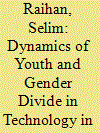

|
|
|
|
|
| Summary/Abstract |
This article identifies the nature of gendered digital divides between male and female youth (aged 15–29) in the context of Bangladesh. As a measuring indicator for technology inclusiveness, this study examines whether a young male or female owns a mobile phone, the most basic means of accessing the Internet. As observed in the descriptive analysis, on average, 46% of young females have a mobile phone, compared to 79% young males. However, such disparity varies across age cohorts and the divides of rural–urban, poor–non-poor, richer–poorer income deciles, etc. To understand whether there is any significant discrimination against women in terms of technology inclusiveness, this study applies the Blinder–Oaxaca (B–O) decomposition technique. The decomposition analysis shows statistically significant discrimination against women in terms of mobile ownership at both the household and the individual level. The factors such as remittances, average years of schooling of the household members, urban residence, household’s income status, etc., significantly reduce discriminatory behaviour towards young females.
|
|
|
|
|
|
|
|
|
|
|
|
|
|
|
|
| 3 |
ID:
127807
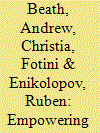

|
|
|
|
|
| Publication |
2013.
|
| Summary/Abstract |
In societies with widespread gender discrimination, development programs with gender quotas are considered a way to improve women's economic, political, and social status. Using a randomized field experiment across 500 Afghan villages, we examine the effects of a development program that mandates female participation. We find that even in a highly conservative context like Afghanistan, such initiatives improve outcomes specific to female participation in some economic, social, and political activities, including increased mobility and income generation. They, however, produce no change in more entrenched female roles linked to family decision-making or in attitudes toward the general role of women in society.
|
|
|
|
|
|
|
|
|
|
|
|
|
|
|
|
| 4 |
ID:
190358
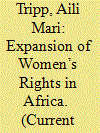

|
|
|
|
|
| Summary/Abstract |
Twenty years after the African Union adopted the Maputo Protocol on the Rights of Women in Africa, constitutional and legislative provisions on women’s rights have proliferated across the continent. Sub-Saharan Africa has achieved some of the world’s highest rates of improvement in women’s economic empowerment. African women have also been at the forefront of global efforts to increase female representation in political and business leadership, peacebuilding, and other areas. But progress on women’s rights has been weaker in the domain of family law on issues including inheritance rights and reproductive freedom. Africa also ranks lowest in closing the gender gap in education, despite major gains at the primary school level.
|
|
|
|
|
|
|
|
|
|
|
|
|
|
|
|
| 5 |
ID:
122083
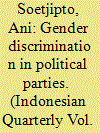

|
|
|
| 6 |
ID:
189715


|
|
|
|
|
| Summary/Abstract |
Afghanistan’s Taliban are back in power. How did they get there? How can their discriminatory policies be explained? And what can be done about it? The article looks back at the failure of international engagement in Afghanistan from 2001 to 2021 and the dynamics that enabled the Taliban to reemerge. Having gained control of the country again in August 2021, the article unpacks the way they govern and control populations, how decisions are made within the divided movement, and how its highly oppressive policies have developed. The article concludes by looking at the Taliban’s approach toward the international community and the resulting limited pathways for constructive engagement.
|
|
|
|
|
|
|
|
|
|
|
|
|
|
|
|
| 7 |
ID:
111797
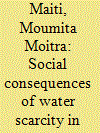

|
|
|
|
|
|
|
|